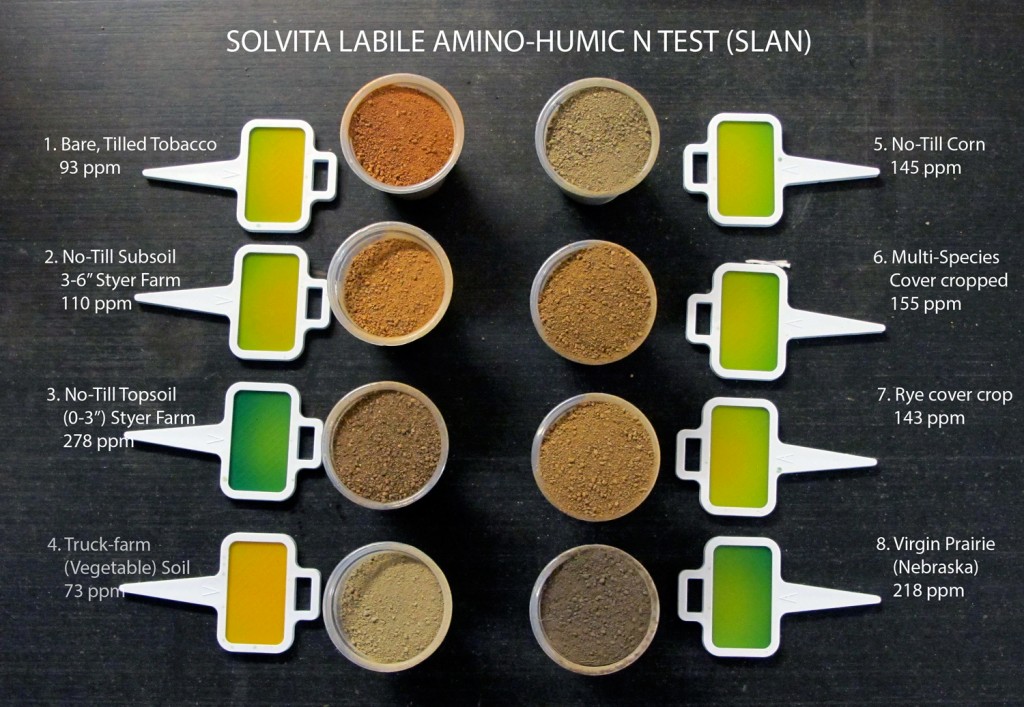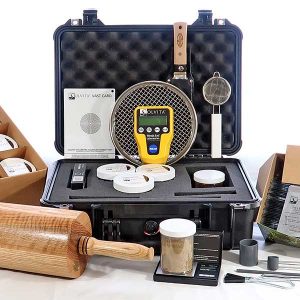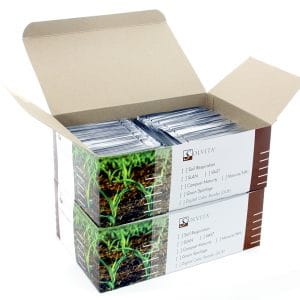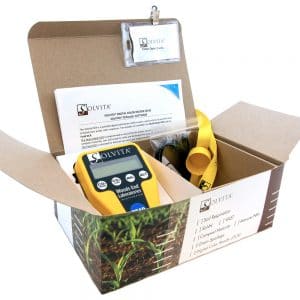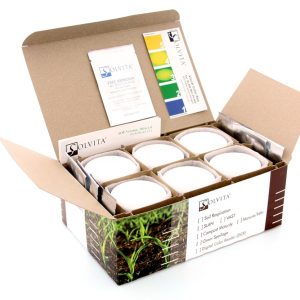SLAN
Solvita® Labile Amino-Nitrogen Test:
Identifying and Repairing Depletion in Soil
Agricultural soils fight a continuous battle of depletion through the loss of humus, the storehouse of organic nitrogen. New test methods can improve understanding of soil makeup and enable management of hitherto hidden reserves in soil that are associated with soil health and yield potential.
This new procedure called SLAN () is an easy-to-perform lab test that simplifies reporting on organic nitrogen reserves present as amino-sugars in soil. The test enables a stunning visual representation of soil reserves (see inset) and can also be quantified in the lab by the Solvita spectrometer. Overall the procedure enables screening large numbers of soils readily and fits into any modern soil lab setting.
Labs already running Solvita® CO2-Burst can implement SLAN without any new equipment. It only requires minutes to set up.
How does SLAN provide information on nutrient depletion in soil?
Ordinary available nitrogen tests report only immediately available nitrogen, while total-N tests are cumbersome, costly and not easy to interpret. SLAN comes in between by pulling from a pool or organic N that is potentially available and is associated with humus and plant debris. The range of SLAN detection does not permit normal rates of ammonium fertilizer to interfere and urea and nitrate are not detected. SLAN is more broad based than specific soil protein tests some are promoting which bias to fungal-protein, and humus is not a protein molecule; however both are likely to be correlated.
Why Run a SLAN Test? – Research Studies
to date indicate that SLAN is useful to predict likelihood yield response to added organic N particularly from manure and legume sources. Overall SLAN in relation to soil organic matter may provide a convenient means to distinguish high quality from lower quality soil humus.
Having an assessment of then “upstream” nitrogen pool ahead of the growing season can provide practical and meaningful information for soil management show that a single test in spring by SLAN can be useful for predicting response to additional nitrogen. SLAN tests have also shown clear, long-term benefits due to cover-crop no-till management (see inset above). In combination with CO2-burst it is believed SLAN provides a compelling alternative test to complement nitrate and PSNT results for a comprehensive view of soil nitrogen and its availability.
Comparing Soils and Management Practices using SLAN:
SLAN yielded interesting results when run on field samples of known management history. Woods End Labs performed the test on several soil samples with the following results.
Region Tested
Piedmont Region
, Nebraska
Result
1) In the Piedmont region of NC, the soils can become extremely depleted, but are very responsive to improved management. SLAN Test results showed large effects of differing management practices in terms of this hidden pool of amino-nitrogen (see image). Truck farming and continuous tobacco soil showed virtually no organic-N pool by the SLAN test, but soils cover-cropped and no-tilled did.
2) The Virgin prairie soil from Nebraska showed similar elevated levels of amino-N, indicated by the intense green color on the paddles in the image above.

